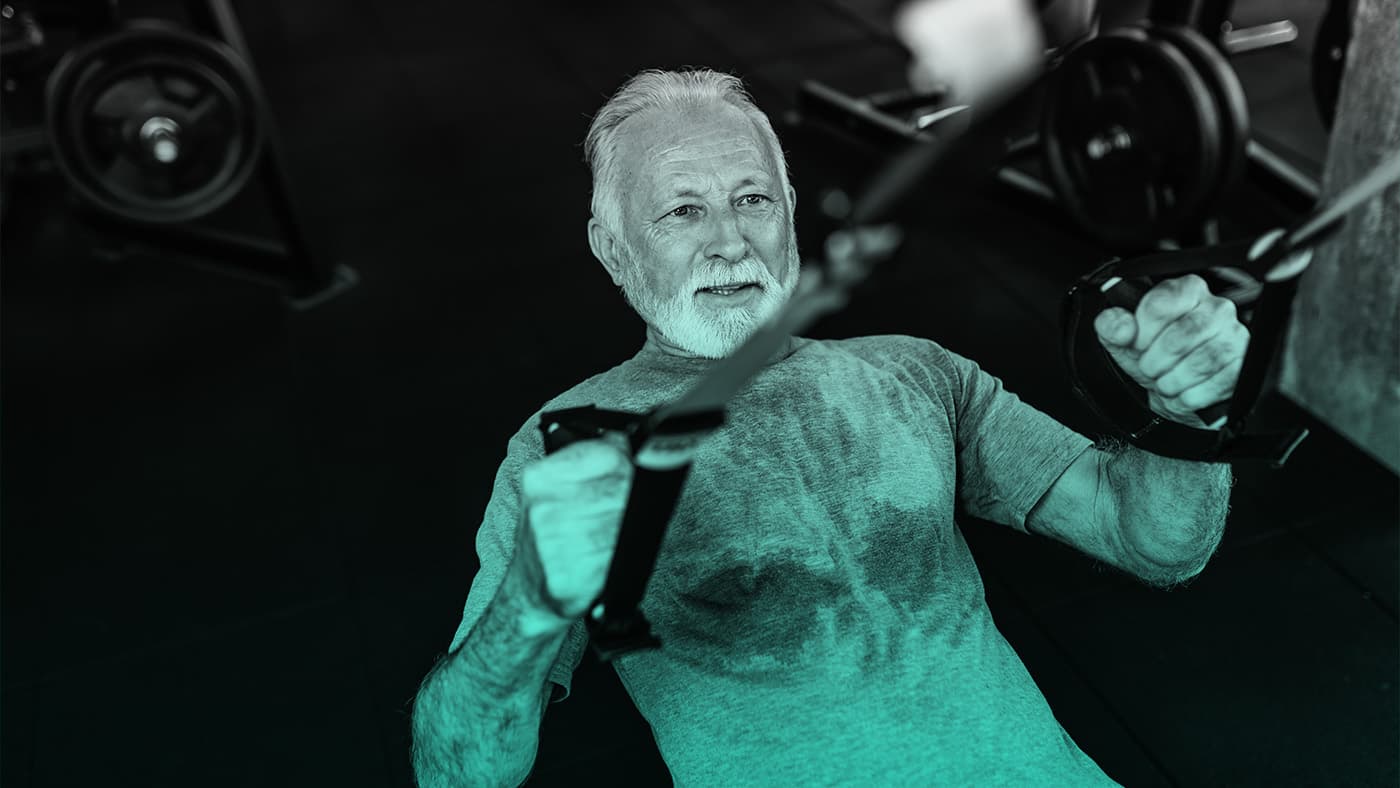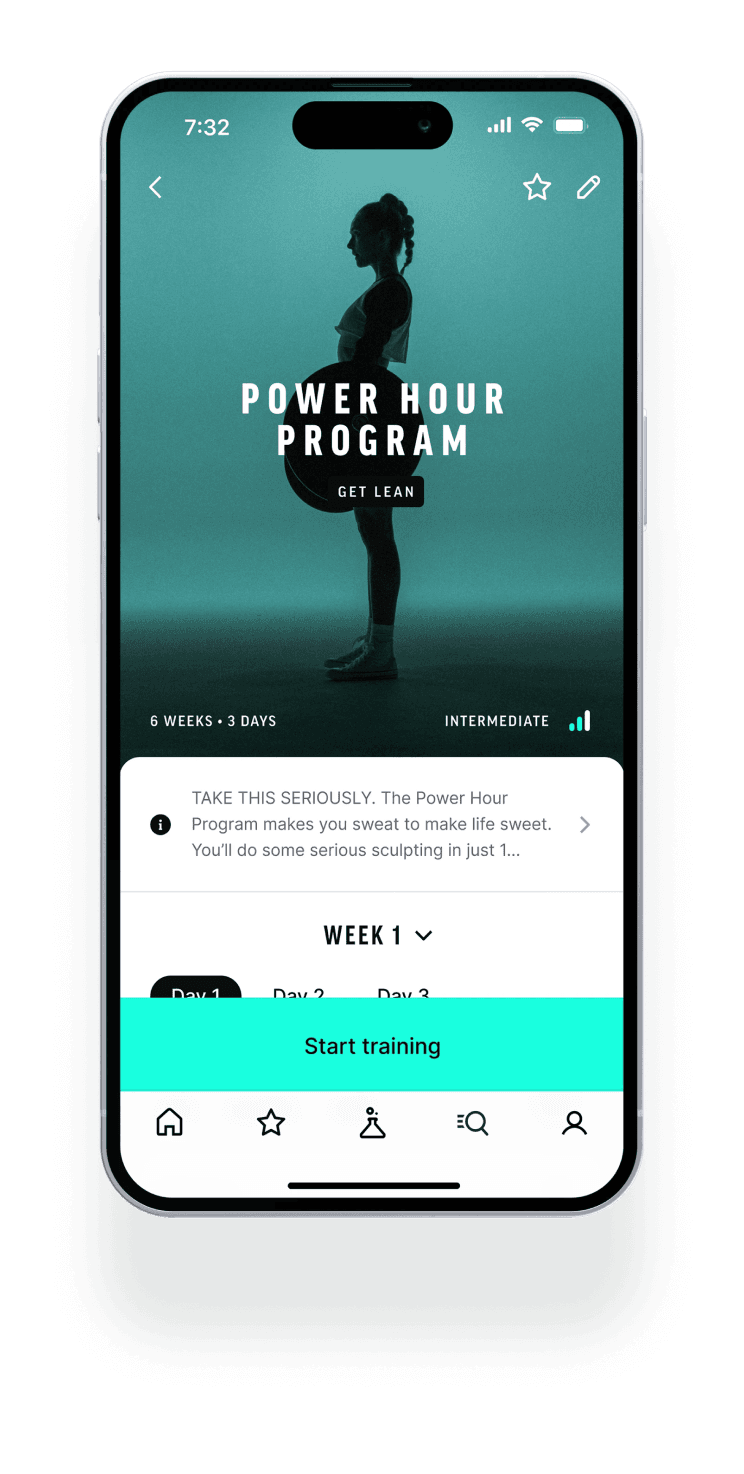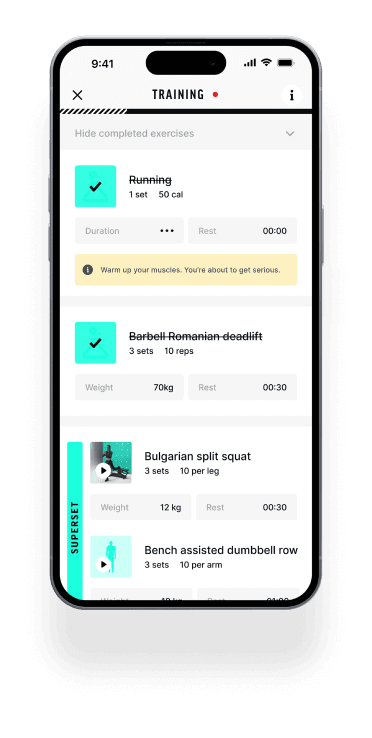Weight Training for Seniors: Strength Exercise Benefits
By Sander Kers• October 25, 2023• 5 min•Nederlands 🇳🇱

WEIGHT TRAINING FOR SENIORS: WHY IT'S ESSENTIAL AND HOW TO GET STARTED
In a world that often celebrates youth, the value of fitness for the elderly is sometimes overlooked. But why should fitness be limited to the younger generation? In reality, seniors might benefit the most from regular exercise, especially weight training.
In this article, you'll discover everything about fitness for seniors and why the combination of weight training and cardio is so beneficial. Included are sample exercises you can do at home and workout routines for the gym.
WHAT IS FITNESS AND WEIGHT TRAINING?
Broadly speaking, fitness refers to physical well-being and overall health. For seniors, a mix of weight training and cardio is vital for maintaining vitality. Weight training is the practice of using resistance to stimulate your muscles, aiming to increase your bone density and maintain or grow your muscle mass. This can be achieved by training with weights, resistance bands, fitness machines, or even your own body weight. Your heart and blood vessels stay in shape with what's called cardio training.
WHY IS FITNESS CRUCIAL FOR THE ELDERLY?
As we age, our bodies undergo natural changes. Muscle mass loss, decreased bone density, and a slower metabolism are among these changes. Weight training can combat these effects:
Maintaining muscle mass: As we age, we lose about 1-2% of our muscle mass every year. Regular weight training can slow down and even reverse this loss.
Increased bone density: Weight training aids in strengthening bones and can reduce the risk of osteoporosis.
Improved mobility and balance: By strengthening muscles, overall mobility is enhanced, reducing the risk of falls. This is crucial as fractures in later life often mark a decline in overall health.
Furthermore, weight training helps in maintaining cognitive functions. In other words, when you engage in fitness, you're also training your brain.
Read also: Building muscle after 50
WHICH MUSCLE GROUPS SHOULD SENIORS TRAIN?
For a balanced fitness routine, it's vital to train all the major muscle groups: legs, chest, back, arms, shoulders, and core. Especially for the elderly, the legs and core are essential. This ensures you can independently get out of bed, rise from a sofa, and continue walking and cycling.
EXERCISES FOR SENIORS TO DO AT HOME
Below are some exercises that seniors can perform at home. If you're looking for more exercises, why not check out our app? There, you'll find comprehensive workout routines tailored for the elderly. Or read here on how to draft a fitness routine for those 50 and above.
1. SQUATS
A fantastic exercise for training your quadriceps, glutes, and core. If you've never done squats or find them challenging, start from a chair so you can always sit down if needed.
2. PUSH-UPS
Push-ups target your chest, shoulders, and triceps muscles. Your core helps keep your spine in position. If the exercise is too challenging, simply do it on your knees. And if you're looking to intensify it, head to the gym and bench press.
3. FORWARD LUNGES
An exercise that simultaneously trains the strength of your quadriceps and balance. Do this exercise at home next to a chair or table, allowing you to hold onto something if you lose balance. You can also perform this exercise by stepping backward.
4. PLANK
Perhaps the most renowned exercise on this list. Act as if you are a plank and maintain this pose as long as possible. Your abdominal or shoulder muscles will signal when you've reached your limit.
Perform these exercises daily, and there's a high chance of aging strongly. Remember, it's never too late to start. For significant improvements, it's wise to visit the gym and incorporate some weights. This will make life's everyday challenges even more manageable.
THE IMPORTANCE OF FLEXIBILITY AND BALANCE AS YOU AGE
Flexibility goes hand in hand with weight training. Not only do you become more supple and balanced by practicing pilates and yoga - which are also great activities - but through weight training too, provided you have a balanced routine. This involves exercises on one leg, stretching, and full-range motion exercises. Enhanced balance is crucial to prevent falls and injuries. Not just during workouts but, more importantly, in real life.
NUTRITIONAL NEEDS FOR SENIORS IN FITNESS
Proper nutrition is the cornerstone of a successful fitness routine. This holds true for both the young and the elderly. While aging brings about natural declines, you don’t have to settle. To slow down the aging process, it's crucial to at least ensure the intake of these key nutrients:
Proteins: Essential for muscle recovery and growth as well as all vital body functions. As you age, the protein requirement to maintain or grow muscle mass increases compared to younger days.
Calcium and Vitamin D: Vitamin D enhances calcium absorption. Both vitamin D production and calcium absorption diminish with age. This happens just when you need them more to maintain bone density.
Hydration: As we age, our body becomes less efficient in maintaining fluid balance and detecting thirst. Thus, it’s pivotal for seniors to pay special attention to hydration, especially during and post workouts.
CARDIO: A HEART FOR LIFE
Cardiovascular exercises, commonly referred to as "cardio", are vital for all, regardless of age. However, for seniors, specific benefits underscore the importance of cardio (heart and blood vessel training):
Heart Health: Cardio exercises bolster the heart and lungs. An efficient heart pumps blood more effectively, and the lungs can transport more oxygen to body cells. This aids in reducing risks of heart diseases, among others.
Metabolism: Aging brings about a decline in metabolic rate. Cardio can boost this rate, promoting weight management and fat burning.
Enhanced Brain Function: Cardiovascular activities enhance blood flow to the brain, potentially improving cognitive functioning. Studies also suggest it can mitigate symptoms of depression and anxiety.
Improved Sleep Quality: Sleep challenges are common among the elderly. Regular cardiovascular activity can bolster sleep quality, aiding faster sleep onset and deeper sleep phases.
Improved Mobility and Joint Health: Cardio exercises like walking, cycling, and swimming not only cater to the heart but also help retain joint mobility and flexibility.
A few cardio exercises tailored for seniors include:
Walking: A natural movement, it doesn't need special equipment (apart from quality shoes) and can be done anywhere. Plus, it’s easily adaptable to your fitness level.
Swimming: A low-impact exercise perfect for those with joint discomforts. It offers muscle resistance while exercising the heart.
Cycling: Whether outdoors or on a stationary bike indoors, cycling is a stellar way to elevate the heart rate without placing undue stress on joints. It also targets the quadriceps.
Dancing: Beyond being an excellent cardio exercise, it's also beneficial for balance, coordination, and mental well-being.
MENTAL BENEFITS OF FITNESS
Exercise has proven benefits for mental health, including reducing symptoms of depression and anxiety and enhancing overall cognitive functioning. Engaging in weight training and cardio becomes especially vital as you age, making it a key component for fitness for the elderly.
SOCIAL BENEFITS OF GROUP FITNESS
Fitness isn't just for the youth. In fact, more individuals over 50 are found in the average gym compared to the younger generation, excluding the big budget chains. Beyond the physical and cognitive benefits, fitness offers another significant advantage. You never work out alone. Many gyms offer group classes like spinning, aqua-aerobics, or yoga. These can assist seniors in building social connections, positively impacting their mental well-being, emphasizing the importance of fitness for seniors.
SAFETY FIRST
It's crucial for seniors to prioritize safety during their fitness journey. This means maintaining good form, listening to your body, and if possible, training under the guidance of a professional. Alternatively, using a reliable fitness app designed user-friendly enough for everyone. Whether you're a beginner or have been training seriously for years, you'll always find a weight training for seniors' regimen that suits you.
FITNESS APP FOR SENIORS
As mentioned above, we've developed a fitness app tailored for every gym-goer. Think of it as your personal trainer in your pocket. It includes customized fitness plans for the elderly. If you're starting, aim for the "feel energised" goal, and for those more advanced, go for "feel fit". These are the most comprehensive training schedules designed specifically for healthy aging. Our app provides step-by-step guidance, videos, and senior-specific tips.
ADAPTING TO INDIVIDUAL NEEDS
Every individual is unique, and this holds even more true for seniors. Some might be dealing with chronic conditions like arthritis, heart diseases, or diabetes. Others might have limitations from previous injuries. It's essential to select a training routine that aligns with personal needs and limitations. Always consult with a physiotherapist or doctor before embarking on serious physical activity.
Read also: how to effectively reduce skin aging and wrinkles
THE IMPORTANCE OF RECOVERY AND REST
While younger individuals might recover quickly from intense workouts, seniors require more time. The significance of adequate rest between training sessions cannot be stressed enough. This not only aids in recovery but also helps prevent injuries. Hence, it's essential not to train too intensely or too soon. It's better to exercise consistently and more frequently than to be constantly sidelined with muscle soreness. Sore muscles should not be the end goal of a workout.
THE ROLE OF TECHNOLOGY IN SENIOR FITNESS
Contrary to the common belief that technology is mainly for the younger generation, seniors can significantly benefit from it. Studies have shown that apps for tracking workouts, heart rate monitors, and even virtual training partners can enhance a more satisfying and effective training experience, pointing out the growing importance of fitness for the elderly in the digital age.
LONG-TERM BENEFITS OF FITNESS FOR SENIORS
While the short-term benefits of fitness for seniors are evident, the long-term advantages are equally impressive. Regular physical activity can contribute to a longer life, but more importantly, a life of better quality and increased independence. Here's an inspiring success story:
Marie, 72, never thought she'd engage in weight training. However, after just a few months of strength training, she says, "I feel stronger, more confident, and have more energy than ever before." Countless stories like Marie's prove that age is just a number when it comes to weight training for seniors.
CONCLUSION
Fitness for seniors is not just about maintaining physical health, but also about enhancing the overall quality of life. Whether you're new to the world of fitness or returning after a long hiatus, it's never too late to start and reap the myriad benefits it offers.
START TRAINING SERIOUSLY
Discover new training methods based on scientific knowledge, improve your form and technique and seriously track your fitness goals.


Scan the code on your phone to download the app in the Apple appstore.

Of gebruik seriousfitnesslab.com/download